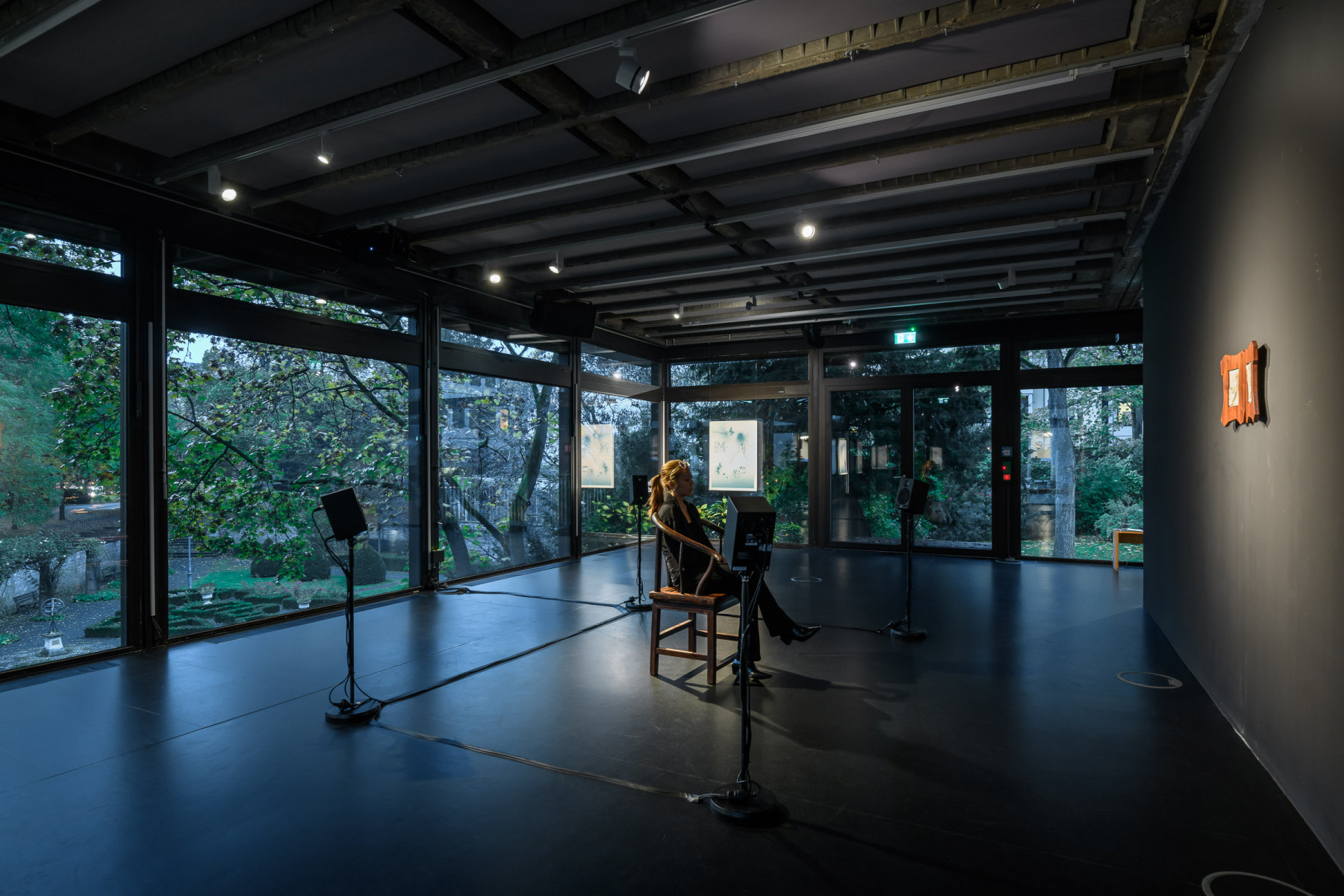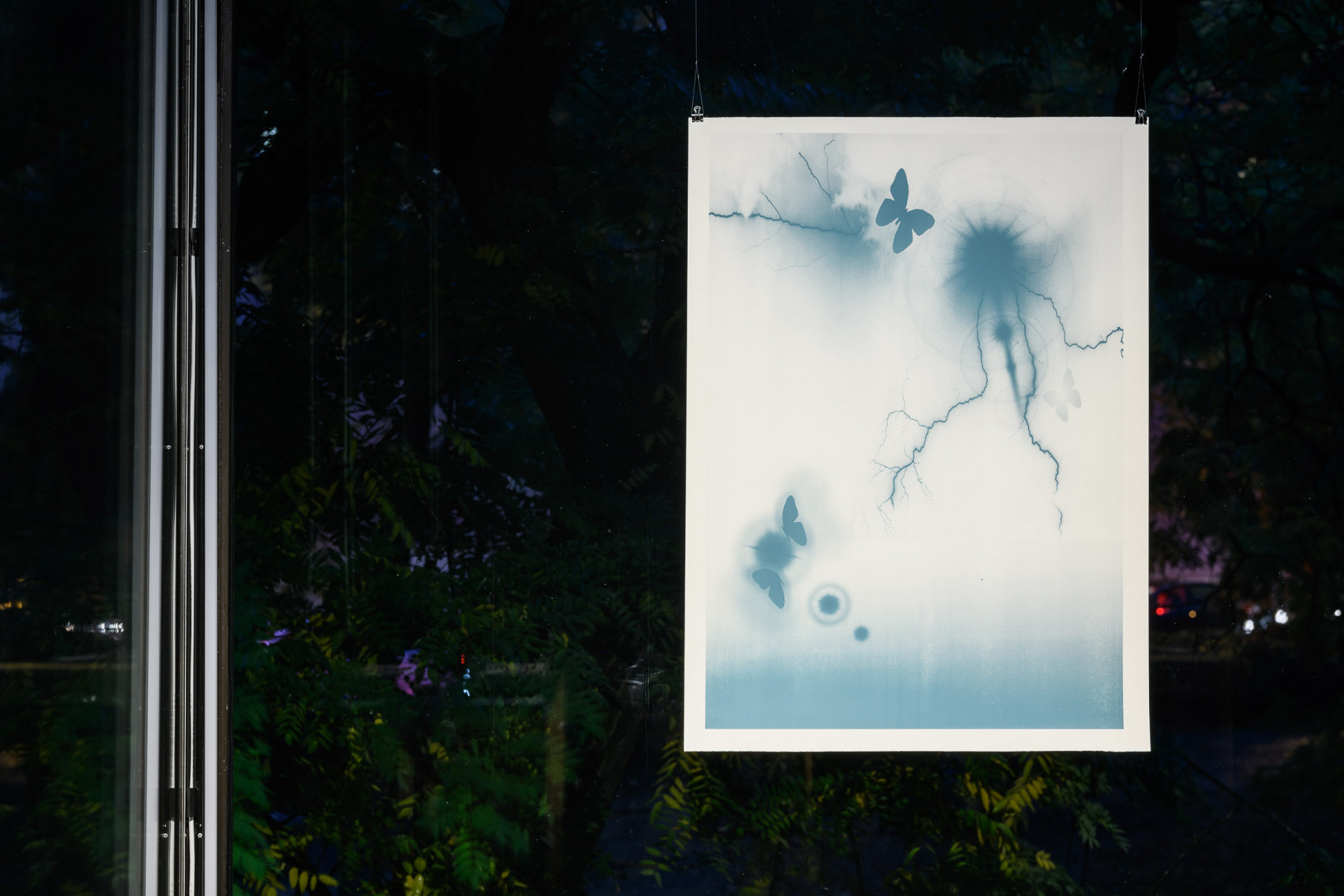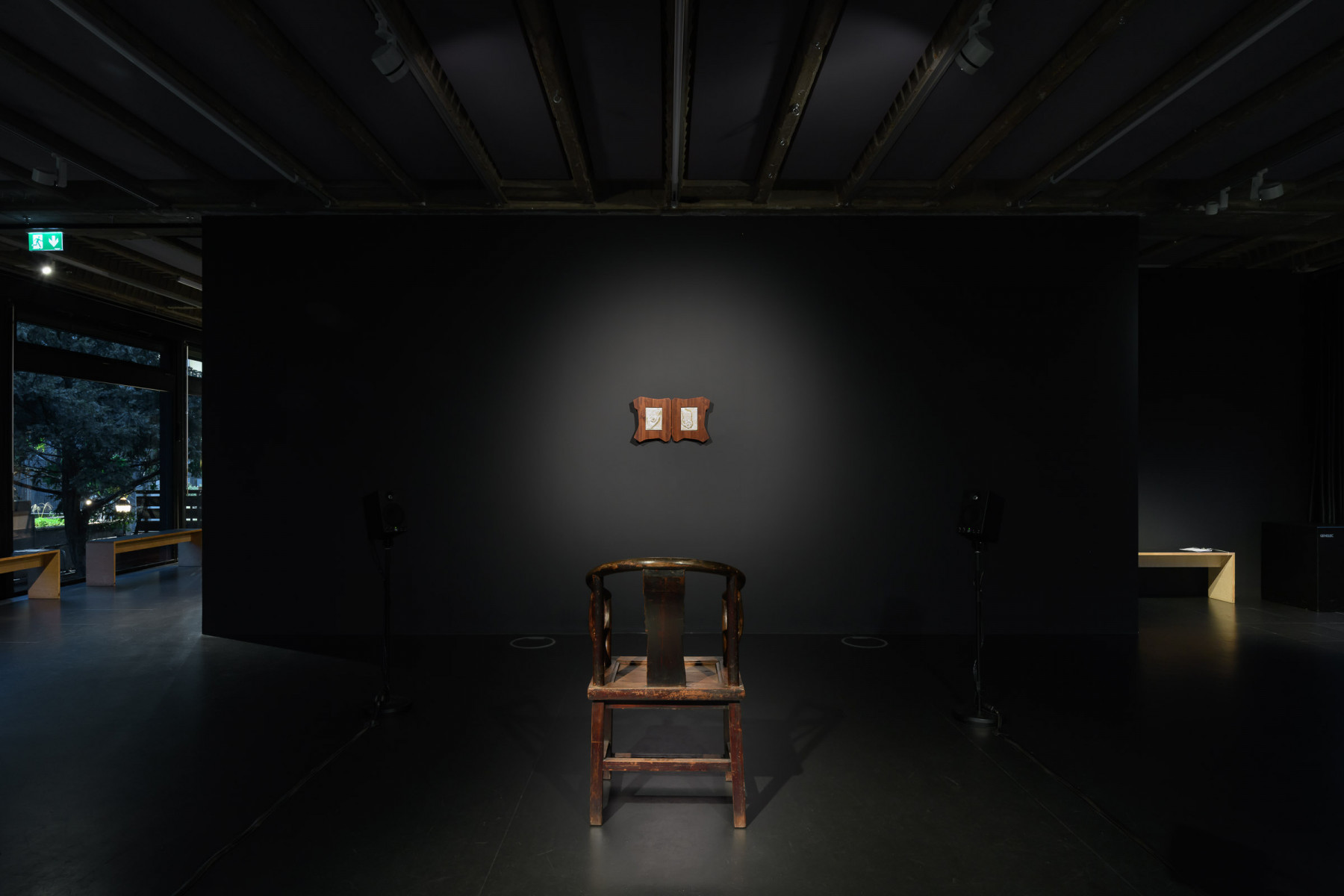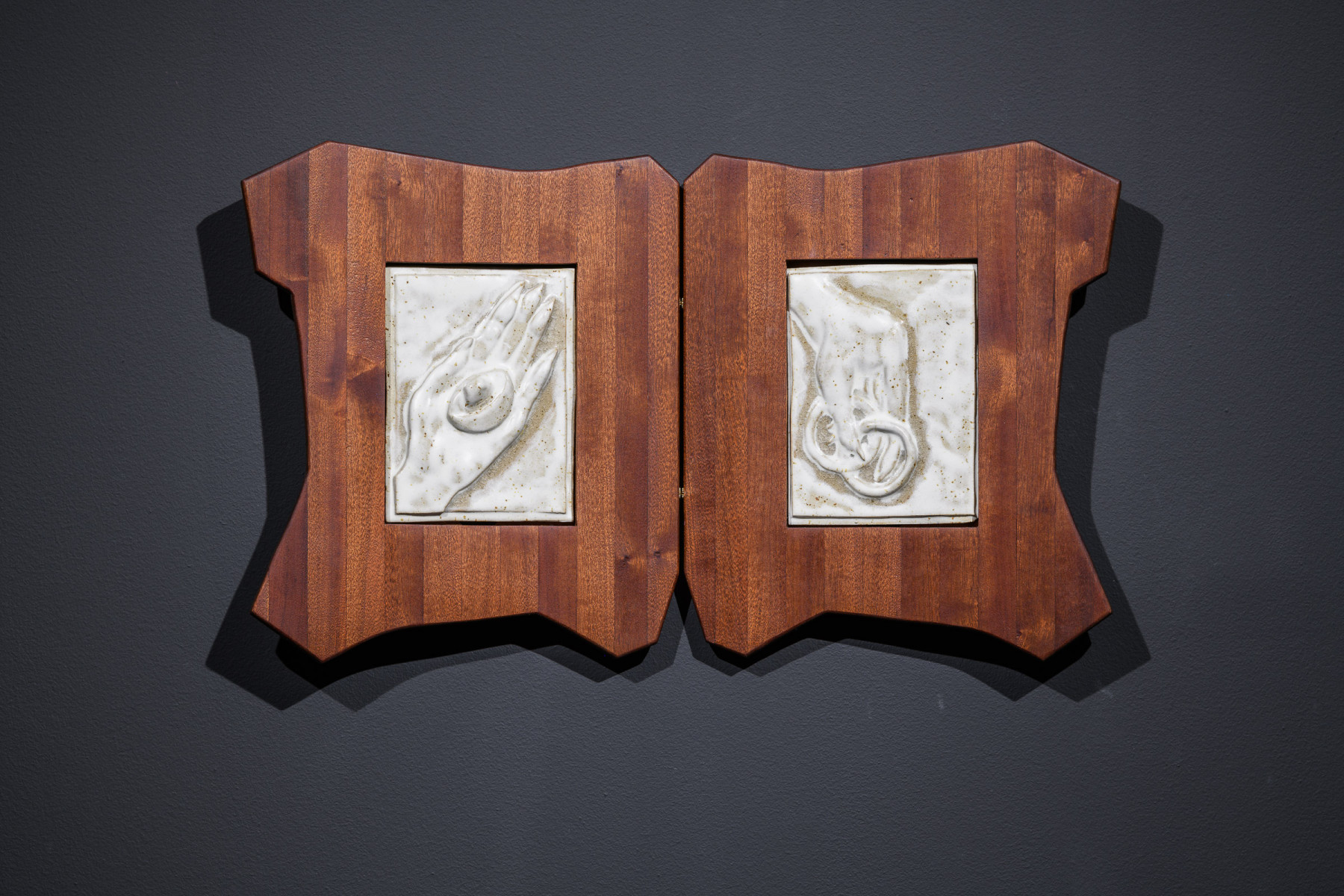Vivien Kämpf in conversation with Ming Yuan
A look back at Ming Yuan's solo-exhibition at saasfee*pavillon, Frankfurt am Main
by Vivien Kämpf
Vivien Kämpf: Our conversation started in March last year, when your exhibition Ethereal Dissonance, Aspiration Unbound at saasfee*pavillon in Frankfurt, which took place in November 2023, was still in an early stage of conception. The first time we sat down together, you told me about your fascination with Chinese opera, its mostly dramatic love stories, and their spiritual thoughts. How did you come across this subject and what particularly fascinated you about it?
Ming Yuan: My fascination with these narratives grew as I sought non-violent approaches in responding to aggression. My exploration through folk stories, theories, and real-life instances blurred the lines between ethical realms – fictional and real-life ethics – prompting me to present the operatic storyline's dramatic logic. I aimed to engage viewers in pondering their judgments and considering the alternatives to address modern-day violence. Unfortunately, the feudal stories often employed the same conservative logic, and the rebellions were limited to self-punishment and sacrifice. This was bothering me until I found a new genre of fantasy folktales and ghostlores which emancipated both the characters and the readers. I was especially fascinated by the horror story collection Liao Zhai Zhi Yi by Pu Songling written about 300 years ago. As I became obsessed with this collection and read through many of the stories, I found some still relevant to our interest today. And that is when I wanted to expand their charm from text to visual and sonic languages. The story of Liancheng for example depicts a young couple’s adversities in an extreme classist society and how they have fought for their love in a fantasied way. Though many centuries have passed, not much has changed. It drew me into deep questions of class struggles and violence again. I looked for an answer to my curiosity and confusion, but I couldn’t. That’s why I wanted to turn the story into a work, where these questions can reside on.

Ming Yuan, Ethereal Dissonance, Aspiration Unbound, Installation view, saasfee*pavillon, 2023. Photography: Moritz Bernoully
VK: In this context, you created a new body of work that allowed the viewers to immerse themselves in the folktale as well as its conflict in many different ways. But before we talk about the individual elements in more detail, I wanted to ask you how you came across the title of the exhibition "Ethereal Dissonance, Aspiration Unbound“?
MY: The exhibited works eventually took off from two love stories. In the folktales, there are millions of ways for how wishes of being together could be fulfilled, such as becoming two butterflies, or getting married in the underworld. Yet those beautiful aspirations remain illusions. In reality, we all have to face conflicts and expectations from family and society. The forceful torture of sexual ethics set by society and the resilience of these characters in pursuit of free love create the ethereal dissonance I was referring to. And despite all the frictions, their wishful aspirations and hopes will stay limitless… so I would say that the title is a condensation of the difficult situation love has to face in a classist world, but it also hints towards a positive result eventually.

Ming Yuan, Tryst of Broken Wings, Silkscreen on paper, 2023. Photography: Moritz Bernoully
VK: A double-edged sword, so to say! Taking a closer look at the individual works, I would like to start with the centerpiece of the exhibition, which was also installed in the middle of the space: The 30-minute sound piece Liancheng. It is a kind of radio play for which you have translated, recorded, and then added a musical score to an old Chinese love story. The production of the work took quite a long time because of all its different layers, didn't it?
MY: Yes indeed, it took up my whole summer. I wanted a four-channel radio play where each speaker resembles a character. So when the listener sits on the 19th century antique Chinese chair in the middle, it’s like they’re on the stage and observe the drama. The chair faces the sculpture and has spotlights hitting it. The setup demands the visitor to be in a certain bodily position, to listen to the feudal love horror, and to stare into an altar. For me it was about creating a ‘pensatoio’, a thinking tank where reflection, manifestation, healing, and praying can happen in isolation and peace. I encouraged people to make an appointment and come alone.
VK: You also refer directly to this story in the work Noisy Benevolence, Quiet Benevolence. The ceramic and wooden sculpture juxtaposes two images that symbolise motifs from Chinese tradition.
MY: On the left, a female hand holds a piece of gold in the shape of a boat. In the love story, Liancheng asks her maid to send money to her boyfriend. This action of gifting sets a mutual understanding that she has faith in his future and will wait and support him. Though the sculpture offers only a still image, we don’t know if she is giving, taking, or simply showing. What is our attitude with sharing valuable property in a romantic relationship, and do we do it with care and respect or arrogance and possession? On the right side, her hand holds a pair of connected jade rings carved out of one stone. They were popular playful objects for aristocratic women to hold when their lovers were absent. It’s a subtle and poetic symbol of connection and longing. The entanglement of property and romance seems never to be resolved. I work a lot with ephemeral fragile materials like mohair. But dealing with an ancient question now, I want the material to be as everlasting as the question itself. Two pieces of ceramic, framed by waxed mahogany and bonded with brass wings.
I decided to make a sculpture that seems to be a book, an altar, a decor but isn’t really. With the presence of a 1900s antique Chinese chair that I was able to borrow from the collection of the Museum Angewandte Kunst (Museum of Applied Arts) in Frankfurt, a proper chair and proper furniture, it brings up the question of domesticity and boundaries.

Ming Yuan, Ethereal Dissonance, Aspiration Unbound, Installation view, saasfee*pavillon, 2023. Photography: Moritz Bernoully
VK: Similarly in the form of a diptych, you also worked on two prints that seemed to float at some distance from one another in front of the windows of the pavilion. Tryst of Broken Wings depicts extracts from an ancient Chinese myth. What made you choose this particular story and its motifs?
MY: The printed diptych is the earliest work that I finished out of all three. It is a reinterpretation of another love folktale with a fantastical myth. A girl pretends to be a boy and goes to school, where she falls in love with one of her colleagues. After graduating, he discovers her true identity and would like to pursue her. However, her family denies his proposal due to his poverty. The man soon passes away from sadness and she also commits suicide in front of his grave. At her death, a lightning strikes down the sky and splits open their graves, where two beautiful butterflies flew out of the crack. I wanted to play with the exaggeration of the dramatic emotion of emancipation at that moment of metamorphosis. I find this logic quite beautiful. It transfers something really heavy into lightness. Young couple's suffering seems to never leave people’s interest. It alleviates the pain of tragedy for sure, but also puts up a bit of a false hope.
VK: It is precisely these juxtapositions that play a pivotal role in your exhibition, both in terms of form and content. So, it's not just about looking into the distant past, but also about the present and even the future as its mirror. Social structures still determine who we are "allowed" to love and who we are not. Do you think that people will ever be able to free themselves from this, or in other words, will society ever set them free? What conclusions were you able to draw from your research?
MY: That’s right! I like puzzles that have multiple ways of connecting and solving. Juxtaposing signals, questions are formulated in a neutral tone, with no hints and no feelings. Especially on such an old and stubborn topic, I wanted to leave all the room for interpretation and personalisation. The question is binary, but the answers are not. This can’t be told but must be felt.
Looking at these fantasies, I felt more courage and hope. Perhaps what we could do is not to recklessly make big statements and ideologies. But rather to believe that we will be patient and gentle in making the decisions that are true to our feelings and are best for us and our loved ones, be it the lover, the family, or oneself.

Ming Yuan, Noisy Benevolence, Quiet Benevolence, 2023, glazed ceramic and mahogany. Photography: Moritz Bernoully

Ming Yuan, Liancheng, Chrome Casette Silkscreened Cover, 2023. Photography: Moritz Bernoully
Listen to the sound-piece Liancheng by Ming Yuan:
https://yuanming.bandcamp.com/album/liancheng
Vivien Kämpf is a curator, writer and art educator currently completing her Master's thesis in Curatorial Studies at the Hochschule für Bildende Künste–Städelschule and Goethe-Universität Frankfurt. Apart from several independent projects, she has most recently worked as a curatorial assistant at WIELS in Brussels.
Ming Yuan is a multidisciplinary artist working primarily with sound, sculpture, text, and printing. Her work takes a critical view of personal political, cultural, and philosophical equilibrium. Engaging with subjects such as feminist rebellion, apocalyptic allegory, ancient mythological figures, retro-futurism, she questions the contemporary and its evolution.